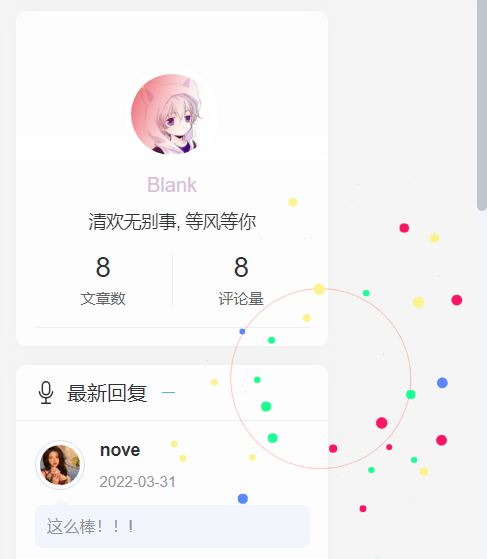out:“散开”重叠折线?
我正在使用am,并希望在视觉上表示相同的两个实体之间的多个折线。例如,一条从图元A到图元B的绿色多段线,以及一条从图元A到图元B的蓝色多段线。我不希望它们重叠或混合,因此我设想随着绘制更多的线而展开,以便可以可视化每条线及其所代表的内容。我已经包含了一张我试图用扇形而不是重叠来解释的粗略图画。

我有一个函数式数据结构来跟踪我想要表示的线条,以及一个已经在上面以编程方式绘制的as图。我想在这一点上,我正在寻找关于如何通过编程弯曲地图上的折线的技术解释,以及任何关于折线管理的建议,以便识别重叠的线,以便我可以应用折弯。
谢谢你的帮助!
回答 1
Stack Overflow用户
回答已采纳
发布于 2017-02-20 15:29:19
这里有一种方法。此示例代码将仅沿经度“分布”行,因此在北/南行上工作得最好,而不是在东/西行上。但我认为它应该传达正确的想法,你只需要想出一种更通用的方法来将中点“移动”到一个视觉上令人愉悦的位置。
我在这里使用基于时间的路径,以访问‘s的插值逻辑。但是我已经选择了一个很久以前的参考时间,并且我只在查看器上显示完成的路径。因此,用户并不知道时间在这里扮演着什么角色。
var viewer = new Cesium.Viewer('cesiumContainer', {
navigationInstructionsInitiallyVisible: false,
animation: false,
timeline: false,
// These next 5 lines are just to avoid the Bing Key error message.
imageryProvider : Cesium.createTileMapServiceImageryProvider({
url : Cesium.buildModuleUrl('Assets/Textures/NaturalEarthII')
}),
baseLayerPicker : false,
geocoder : false,
// This next line fixes another Stack Snippet error, you may omit
// this setting from production code as well.
infoBox : false
});
var numberOfArcs = 5;
var startLon = -105;
var startLat = 39.7;
var stopLon = -98.4;
var stopLat = 29.4;
var spread = 5;
var referenceTime = Cesium.JulianDate.fromIso8601('2001-01-01T00:00:00Z');
var midTime = Cesium.JulianDate.addSeconds(referenceTime, 43200, new Cesium.JulianDate());
var stopTime = Cesium.JulianDate.addSeconds(referenceTime, 86400, new Cesium.JulianDate());
for (var i = 0; i < numberOfArcs; ++i) {
var color = Cesium.Color.fromRandom({
alpha : 1.0
});
// Create a straight-line path.
var property = new Cesium.SampledPositionProperty();
var startPosition = Cesium.Cartesian3.fromDegrees(startLon, startLat, 0);
property.addSample(referenceTime, startPosition);
var stopPosition = Cesium.Cartesian3.fromDegrees(stopLon, stopLat, 0);
property.addSample(stopTime, stopPosition);
// Find the midpoint of the straight path, and move it.
var spreadAmount = (spread / (numberOfArcs - 1)) * i - (spread / 2);
var midPoint = Cesium.Cartographic.fromCartesian(property.getValue(midTime));
midPoint.longitude += Cesium.Math.toRadians(spreadAmount);
var midPosition = viewer.scene.globe.ellipsoid.cartographicToCartesian(
midPoint, new Cesium.Cartesian3());
// Redo the path to be the new arc.
property = new Cesium.SampledPositionProperty();
property.addSample(referenceTime, startPosition);
property.addSample(midTime, midPosition);
property.addSample(stopTime, stopPosition);
// Create an Entity to show the arc.
var arcEntity = viewer.entities.add({
position : property,
// This path shows the arc as a polyline.
path : {
resolution : 1200,
material : new Cesium.PolylineGlowMaterialProperty({
glowPower : 0.16,
color : color
}),
width : 10,
leadTime: 1e11,
trailTime: 1e11
}
});
// This is where it becomes a smooth path.
arcEntity.position.setInterpolationOptions({
interpolationDegree : 5,
interpolationAlgorithm : Cesium.LagrangePolynomialApproximation
});
}
// Optionally, add start and stop points, mostly for easy zoomTo().
viewer.entities.add({
position : Cesium.Cartesian3.fromDegrees(startLon, startLat),
point : {
pixelSize : 8,
color : Cesium.Color.WHITE
}
});
viewer.entities.add({
position : Cesium.Cartesian3.fromDegrees(stopLon, stopLat),
point : {
pixelSize : 8,
color : Cesium.Color.WHITE
}
});
viewer.zoomTo(viewer.entities);html, body, #cesiumContainer {
width: 100%; height: 100%; margin: 0; padding: 0; overflow: hidden;
font-family: sans-serif;
}<link href="http://cesiumjs.org/releases/1.30/Build/Cesium/Widgets/widgets.css"
rel="stylesheet"/>
<script src="http://cesiumjs.org/releases/1.30/Build/Cesium/Cesium.js">
</script>
<div id="cesiumContainer"></div>
页面原文内容由Stack Overflow提供。腾讯云小微IT领域专用引擎提供翻译支持
原文链接:
https://stackoverflow.com/questions/42237055
复制相似问题








